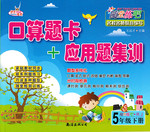题目内容
【题目】 Even after centuries of exploration(探险), the ocean still holds its mysteries. Although we know more today about the world’s oceans and creatures living in them than ever before, every once in a while the sea brings up something so strange, so unexpected, that makes the world wonder what it could be.
Such was the case when the currents (水流) of the Mediterranean Ocean recently washed a 13-foot-long, smelly body onto the shores of the village of Villaricos in Andalusia, Spain. An early report in the Spanish publication Lavante described the strange, horned (带角的) body as what might seem like a big fish, but it was already in pieces. Locals joked that it was some kind of Loch Ness Monster.
The media jumped right on the creature, of course. Some sites called it a horned sea monster. The popular newspaper Boing Boing called it a dragon. Some people guessed that it might be an oarfish(皇带鱼), which is actually a rarely seen kind of big fish that can grow up to 55 feet long.
But now the experts have weighed in and we’re sorry to report that it’s not a dragon, a Loch Ness Monster, or even an oarfish. “That is actually a shark skeleton (骨架),” Professor Grubbs from Florida State University told NBC News. “The parts toward the back were confusing me, but those are the lower caudal fin (尾鳍) supports. The “horns” are the scapulocoracoids which support the pectoral fins(胸鳍).” Scapulocoracoids are backbones common to many animals.
So there we go, another mystery solved. Well, the ancient maps that once described areas of the ocean as places of dragons have yet to be proven true. But it’s good to know that the ocean still has a few surprises for us, even in cases where they’re just dead, smelly bodies.
【1】The creature mentioned in the text _____.
A. was about 15 feet long with a horn
B. could probably grow up to 55 feet long
C. was already in pieces but it was still alive
D. was found on the shores of a village in Spain
【2】What does the underlined word “it” in Paragraph 2 really refer to?
A. A dragon. B. A shark skeleton.
C. An oarfish. D. A horned sea monster.
【3】The third paragraph is mainly about _____.
A. how the creature was found
B. the characteristics of an oarfish
C. people’s guesses about the creature
D. Boing Boing’s opinion of the creature
【4】The main purpose of the text is to _____.
A. show the mystery of the ocean
B. ask people to protect sea animals
C. introduce a rarely seen kind of fish
D. show how to find surprises in the sea
【答案】
【1】D
【2】B
【3】C
【4】A
【解析】
试题分析:本文是一篇奇闻。本文讲述了从地中海中漂浮出来的一具奇怪的尸体。它十三英尺长,散发着恶臭,头上有角,人们对尸体的身份有着诸多的猜测。最后科学家通过检验认为这是一具鲨鱼的骨架。
【1】D事实细节题。根据文章第二段Such was the case when the currents (水流) of the Mediterranean Ocean recently washed a 13-foot-long, smelly body onto the shores of the village of Villaricos in Andalusia, Spain. 可知尸体是在西班牙的一个小村庄发现的,故选D。
【2】B词义猜测题。It只得是那具怪异的尸体,最后科学家发现That is actually a shark skeleton (骨架),其实它是鲨鱼骨架,故选B。
【3】C段落大意题 。文章第三段Some sites called it a horned sea monster. The popular newspaper Boing Boing called it a dragon. Some people guessed that it might be an oarfish(皇带鱼).这些都是人们对尸体身份的猜测,故选C。
【4】A文章大意题。文章第一段 Even after centuries of exploration(探险), the ocean still holds its mysteries. ,最后一段 So there we go, another mystery solved. 可知这篇文章介绍了一件显示海洋神秘性的事件,故选A。

 口算题卡加应用题集训系列答案
口算题卡加应用题集训系列答案【题目】B
Gallery Policies | |
Visitors must present all carried items for inspection upon entry. After inspection, all bags, backpacks, umbrellas, parcels, and other things as determined by security officers must be left at the checkrooms, free of charge, close to each entrance. All oversized bags, backpacks and luggage must be left at the checkrooms near the 4thStreet entrance of either the East or West Building. These items will have to be x-rayed before being accepted. Items of value, such as laptop computers, cameras, and fur coats, may not be left in the checkrooms but may be carried into the galleries. | For the safety of the artworks and other visitors, nothing may be carried on a visitor’s back. Soft front baby carriers are allowed, but children may not be carried on shoulders or in a child carrier worn on the back. Pushchairs are available free of charge near each checkroom. |
【1】When people come to visit the Gallery, they should ____________.
A. leave all their carried items at the checkrooms
B. have all their carried items x-rayed at the entrance
C. take all their carried items with them without inspection
D. have all their carried items inspected at the entrance
【2】What does the Gallery feel sorry for?
A. Visitors have to keep their valuable items in the checkrooms.
B. The size of visitor items allowed into the Gallery is limited.
C. It cannot keep oversized visitor items due to limited space.
D. Visitor items over 17×26 inches must go through additional checks.
【3】Parents with small children visiting the Gallery _____________.
A. can carry their children in soft front child carriers
B. can carry their children on their shoulders
C. can carry their children in child carriers worn on the back
D. ought to pay if they want to use pushchairs for their children
【4】Visiting photographers should make sure that ____________.
A. pictures and videos are allowed for personal use anywhere in the Gallery
B. tripods are allowed except in some special exhibitions
C. picture-taking and videoing are totally forbidden in the Gallery
D. pictures and videos can be taken in some places for personal use